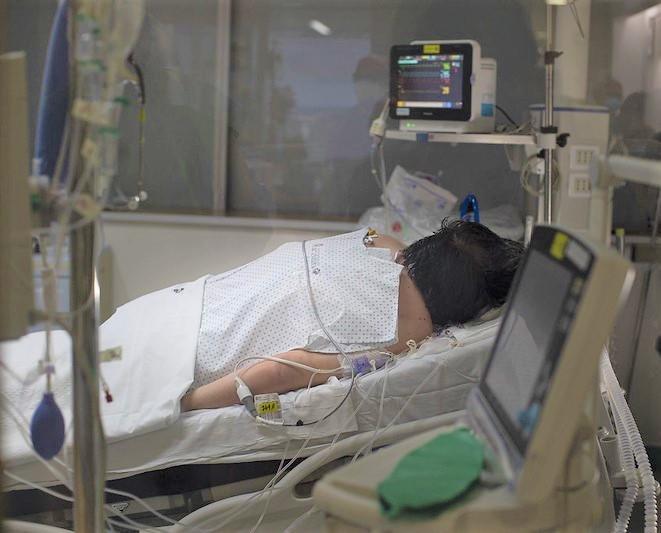Proning—lying on the stomach—has been useful for treating intubated, sedated COVID-19 patients, but a new study designed to tease out possible benefits for awake patients found that the method is difficult to use.
Early in the pandemic, when there were few treatments for COVID-19 and hospital wards were overwhelmed, doctors reported benefits in severely ill patients who were placed in the prone position, a well-known strategy for managing patients who are in acute respiratory distress.
It wasn't clear, however, if proning, which is designed to allow more oxygen into the lungs, would be useful for those with less severe infections, who typically are awake and receiving oxygen.
No differences in clinical, physiologic outcomes
To assess the treatment in less severe hospitalized patients, researchers from Canada and the United States conducted a randomized trial that looked at both clinical and physiological outcomes. They published their findings yesterday in BMJ.
They based their findings on 248 awake patients who were admitted for COVID-19 at 15 Canadian and US hospitals from May 2020 to May 2021. Patients were randomly assigned to either prone positioning with the goal of 2 hours four times during the day plus sleeping prone at night for a week, if possible, or standard treatment.
For the prone group, hospital staff were encouraged to support adherence to the suggested proning schedule. About 4% of the patients were on high-flow oxygen at baseline.
The researchers found that, over the first 3 days, the proning group averaged only about 2.5 hours per day in the position, with discomfort the main reason for low adherence.
Clinical course didn't vary between the two groups. Both had similar risk of death, need for mechanical ventilation, or worsening respiratory failure.
When the investigators compared the physiologic differences between the two groups, they found that oxygen saturation was similar for both. They stopped the trial early when it was clear no improvements were found.
The team concluded that the findings suggest that proning isn't well tolerated and that new approaches are needed to improve adherence. They said future studies are needed to assess whether more time spent in the position yields any clinical benefit.
Treatment potential requires further study
In a related commentary, a group of UK and Swiss clinicians wrote that awake proning of patients with progressive respiratory failure is attractive because of its simplicity, but data to guide the use have been scarce.
They note that an August 2021 meta-analysis showed promise for the treatment, but patients were prone for an average of 5 hours a day, twice as long as in the new study. Also, one of the studies in the meta-analysis had an intensive care specialist on hand to regularly encourage patients to prone and push caregivers to persist with the method, a resource not typically available in most hospital settings.
The commentary authors also noted that the patients in the earlier trial were sicker and that, in earlier or milder disease, the patients' lung situation might not be bad enough for proning to make a difference.
"Therefore, one of this trial's key findings was that, in routine clinical settings, awake prone positioning is difficult for patients to tolerate for long enough to improve outcomes," they wrote, adding that more efforts are needed to find ways to make awake proning more comfortable and acceptable.






















